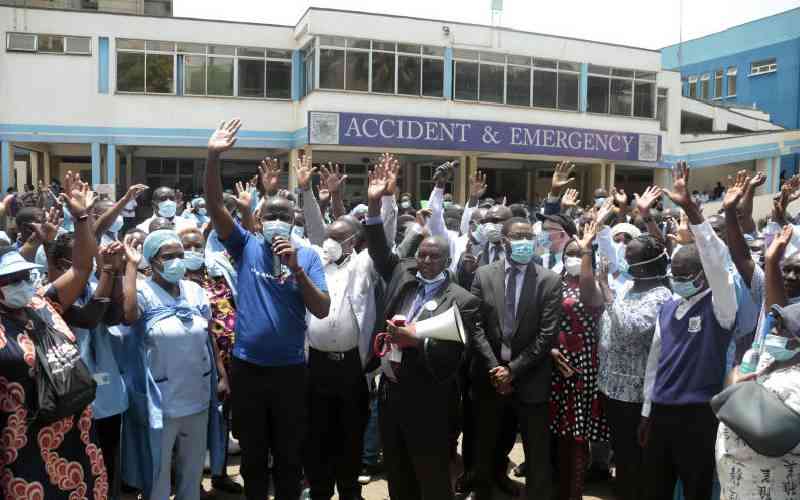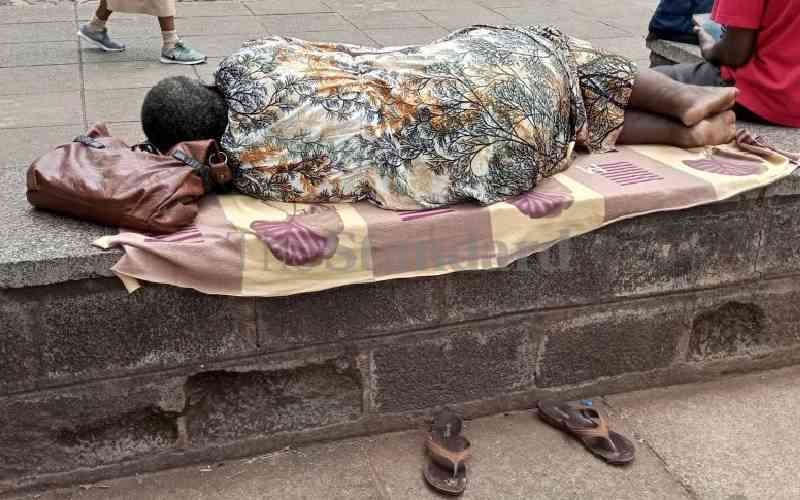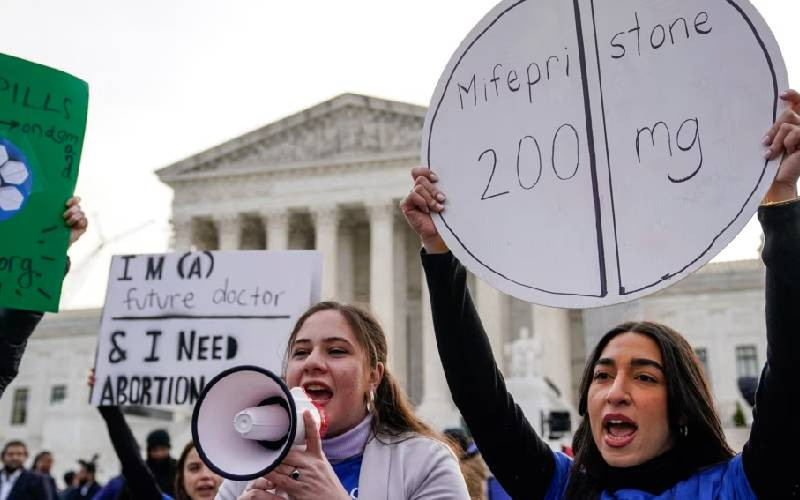By Elizabeth Mwai
Deep furrows lined Prof Joseph Karanja’s forehead as he shuffled through a pile of dusty medical records.
The associate professor of the University of Nairobi’s Obstetrics and Gynaecology Department was preparing for a presentation for the International Day for the Decriminalisation of Abortion which was marked worldwide last Friday.
Since he became a doctor in 1976, Prof Karanja has treated thousands of abortion-related complications. Each case he handles disturbs him. He knows it could have been prevented.
“Each time I treat a woman with abortion complications, I’m overcome by a great sorrow, as majority of them are young and in their prime,” says Karanja.
Last year, Karanja and two other doctors handled one case, which, to date, disturbs them. The image of the 20-year-old woman, who was brought to their care when her life hung by a thread, has lingered since.
Botched
The woman had been referred to Kenyatta National Hospital from one of the peri-urban slums after she had hid the botched abortion for ten days.
Her relatives noted her deteriorating health and forced her to disclose the truth. By the time she reached KNH, she was almost going into shock.
“Upon examination, we realised that she had been 16 weeks pregnant and the quack who had attempted to do the abortion had not only perforated her uterus but also injured her intestines,” says Karanja. The intestines and uterus were already rotting.
“We had to remove her uterus and chop off several centimetres of her intestines.”
The patient was admitted at the Intensive Care Unit in a delicate condition.
She underwent several operations including a colostomy — a surgical procedure in which a stoma is formed by drawing the healthy end of the large intestine or colon through an incision in the anterior abdominal wall and suturing it into place.
This opening, in conjunction with the attached plastic bag, provides an alternative channel for stool to leave the body.
Stay informed. Subscribe to our newsletter
The stoma is reversed when infection healing occur, which may take one to three months depending on the circumstances.
She stayed in hospital for six months fighting for her life. Her bill was more than Sh250,000.
Unfortunately, this expense is borne by the taxpayer as more than 300 women who end up at KNH annually for post-abortion complications are unable to pay for treatment.
Currently, it is estimated that the Government spends about Sh300 million annually as direct costs in offering post-abortion care services in public facilities.
The high number of such patients in hospitals has also contributed to the shortages of essential medicines in health facilities nationwide. For this woman, and many like her, she would never bear children, yet this could have been avoided.
The Constitution allows women seeking abortion to access it when ‘in the opinion of a trained health professional, there is need for emergency treatment, or the life or health of the (pregnant woman) is in danger, or if permitted by any other written law’.
But abortion in Kenya is illegal. You cannot walk into a public hospital and demand to have the procedure carried out.
So when some women realise they are pregnant, the first thing that comes to mind is how to get rid of it if it wasn’t planned.
A quack performs the operation in a backstreet clinic or the women do it on their own, resulting to irreversible damage.
“Yet this a simple procedure that can be handled safely in a health facility,” says Karanja.
At KNH’s Ward 1D, half of the patients are admitted due to complications of unsafe abortions, points out Karanja.
Jeremiah Maina, the national treasurer of the National Nurses Association of Kenya, says the many cases of incomplete abortions he has seen are spine-chilling.
Maina says a large percentage of the women, many of them teenagers, suffer grave damage that leaves them incapable of bearing children in future.
Global concern
This situation is not just a Kenyan problem but a matter of global concern. Globally, a new international campaign for women’s right to safe abortion was launched early this year.
This followed almost a year of discussions and consultations with many advocates of abortion rights around the world.
Many organisations are working worldwide to improve women’s access to safe abortion services — through advocacy, law and policy reform, capacity building, service delivery, training and information sharing.
In Kenya, the Reproductive Health and Rights Alliance and like minded partners are working round the clock in advocacy efforts to save women from dying in the hands of unprofessional service providers who offer unsafe abortion services.
 The Standard Group Plc is a
multi-media organization with investments in media platforms spanning newspaper
print operations, television, radio broadcasting, digital and online services. The
Standard Group is recognized as a leading multi-media house in Kenya with a key
influence in matters of national and international interest.
The Standard Group Plc is a
multi-media organization with investments in media platforms spanning newspaper
print operations, television, radio broadcasting, digital and online services. The
Standard Group is recognized as a leading multi-media house in Kenya with a key
influence in matters of national and international interest.
 The Standard Group Plc is a
multi-media organization with investments in media platforms spanning newspaper
print operations, television, radio broadcasting, digital and online services. The
Standard Group is recognized as a leading multi-media house in Kenya with a key
influence in matters of national and international interest.
The Standard Group Plc is a
multi-media organization with investments in media platforms spanning newspaper
print operations, television, radio broadcasting, digital and online services. The
Standard Group is recognized as a leading multi-media house in Kenya with a key
influence in matters of national and international interest.









